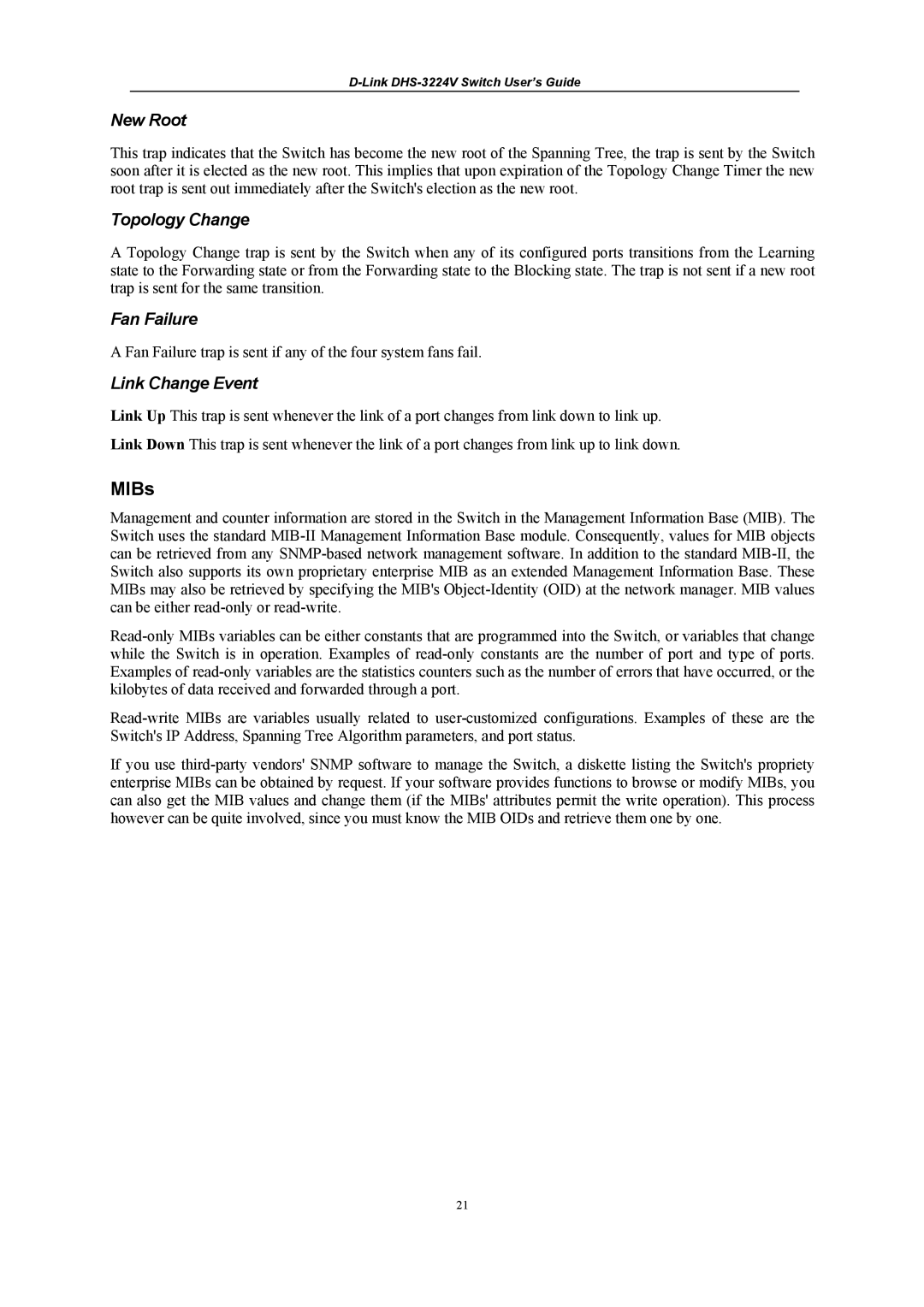New Root
This trap indicates that the Switch has become the new root of the Spanning Tree, the trap is sent by the Switch soon after it is elected as the new root. This implies that upon expiration of the Topology Change Timer the new root trap is sent out immediately after the Switch's election as the new root.
Topology Change
A Topology Change trap is sent by the Switch when any of its configured ports transitions from the Learning state to the Forwarding state or from the Forwarding state to the Blocking state. The trap is not sent if a new root trap is sent for the same transition.
Fan Failure
A Fan Failure trap is sent if any of the four system fans fail.
Link Change Event
Link Up This trap is sent whenever the link of a port changes from link down to link up.
Link Down This trap is sent whenever the link of a port changes from link up to link down.
MIBs
Management and counter information are stored in the Switch in the Management Information Base (MIB). The Switch uses the standard
If you use
21
